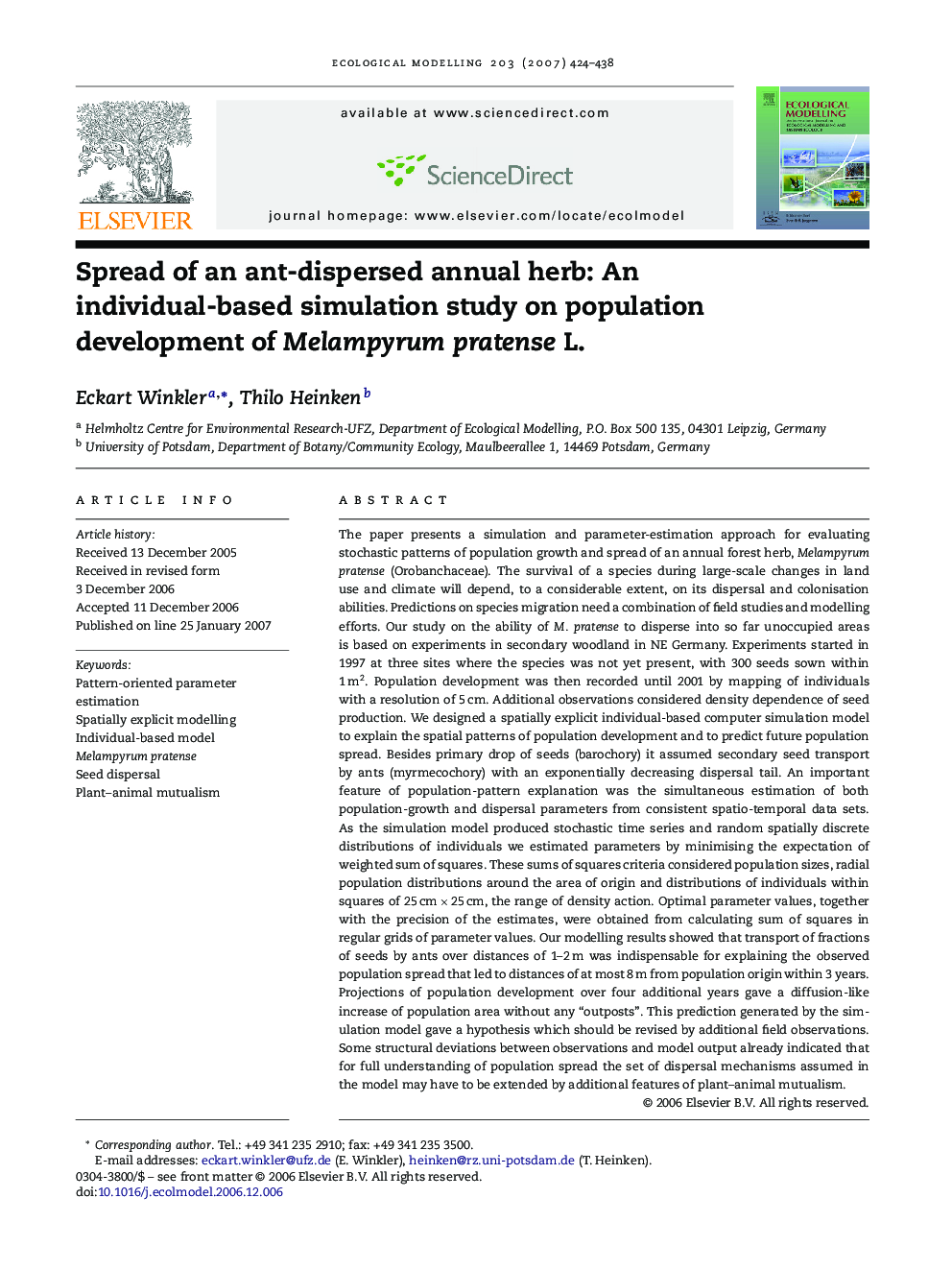| کد مقاله | کد نشریه | سال انتشار | مقاله انگلیسی | نسخه تمام متن |
|---|---|---|---|---|
| 4378563 | 1617550 | 2007 | 15 صفحه PDF | دانلود رایگان |

The paper presents a simulation and parameter-estimation approach for evaluating stochastic patterns of population growth and spread of an annual forest herb, Melampyrum pratense (Orobanchaceae). The survival of a species during large-scale changes in land use and climate will depend, to a considerable extent, on its dispersal and colonisation abilities. Predictions on species migration need a combination of field studies and modelling efforts. Our study on the ability of M. pratense to disperse into so far unoccupied areas is based on experiments in secondary woodland in NE Germany. Experiments started in 1997 at three sites where the species was not yet present, with 300 seeds sown within 1 m2. Population development was then recorded until 2001 by mapping of individuals with a resolution of 5 cm. Additional observations considered density dependence of seed production. We designed a spatially explicit individual-based computer simulation model to explain the spatial patterns of population development and to predict future population spread. Besides primary drop of seeds (barochory) it assumed secondary seed transport by ants (myrmecochory) with an exponentially decreasing dispersal tail. An important feature of population-pattern explanation was the simultaneous estimation of both population-growth and dispersal parameters from consistent spatio-temporal data sets. As the simulation model produced stochastic time series and random spatially discrete distributions of individuals we estimated parameters by minimising the expectation of weighted sum of squares. These sums of squares criteria considered population sizes, radial population distributions around the area of origin and distributions of individuals within squares of 25 cm × 25 cm, the range of density action. Optimal parameter values, together with the precision of the estimates, were obtained from calculating sum of squares in regular grids of parameter values. Our modelling results showed that transport of fractions of seeds by ants over distances of 1–2 m was indispensable for explaining the observed population spread that led to distances of at most 8 m from population origin within 3 years. Projections of population development over four additional years gave a diffusion-like increase of population area without any “outposts”. This prediction generated by the simulation model gave a hypothesis which should be revised by additional field observations. Some structural deviations between observations and model output already indicated that for full understanding of population spread the set of dispersal mechanisms assumed in the model may have to be extended by additional features of plant–animal mutualism.
Journal: Ecological Modelling - Volume 203, Issues 3–4, 10 May 2007, Pages 424–438